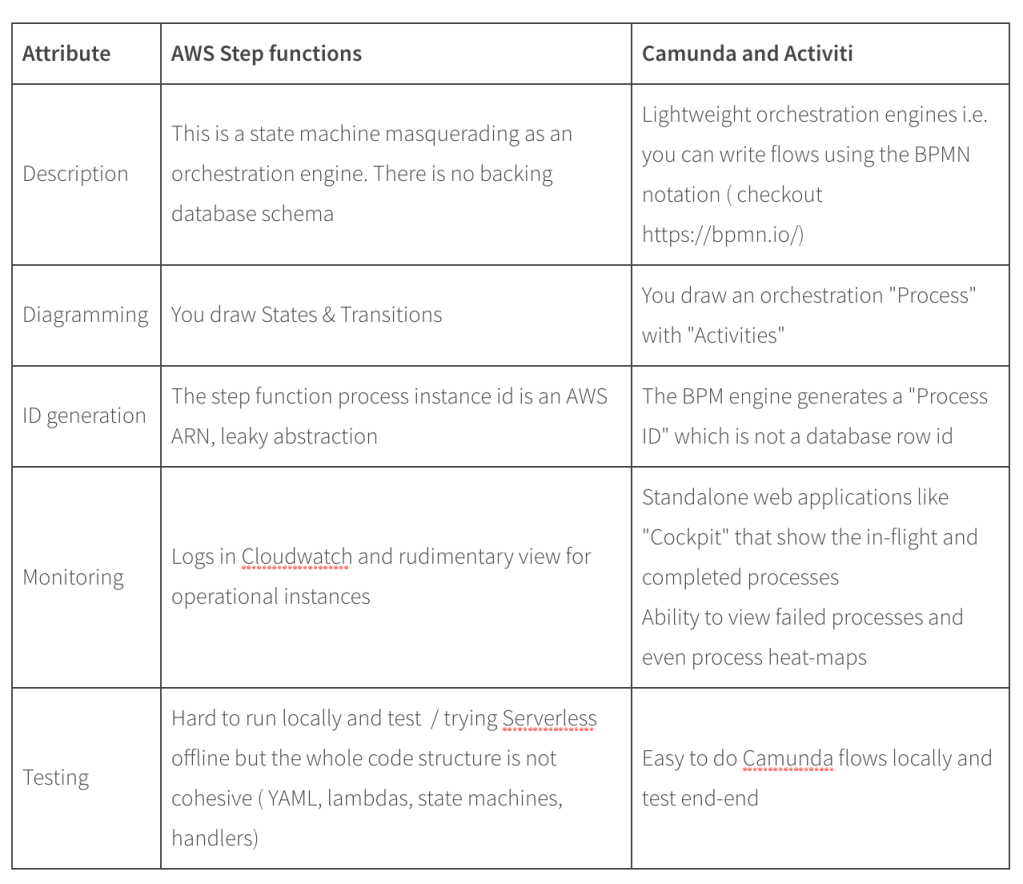Just based on recent experience, I am going to put this out there – AWS Step Functions are great for technical state machines which move from one-activity to another but not really designed for stateful process orchestration and definitely not for implementing SAGA
Serverless Step Functions from AWS or BPMN Engines?
When building microservices, the Mulesoft type platform lets you do a lot of the “stateless” request/response or async interfaces really well. But for “stateful” things, especially ones where we need the following, I think AWS Step functions are a half-baked option
This is because there are good embedded BPMN engines that can do the following:
- Do stateful end-to-end flows and show them in a dashboard
- Do stateful flows with activities with Synchronous or Asynchronous (request/response i.e. one-way request and then a wait for a message) actions (with AWS step functions, you code your way out of this)
- Do out-of-the box RESTful APIs for starting a process, getting the tasks state for a process or pushing the state forward etc
- Do business friendly diagrams
- Do operational views with real-time “per process” view of current state or amazing historical views with heat-maps
- Easy to manage and maintain by the lowest common denominator in your team – lets face it, the cost of maintenance depends on the cost of your resource supporting it and not everyone is AWS skilled and cheap
The only argument I had heard for AWS was that it was better than the embedded BPM engines because we did not need to manage a database. We threw that argument out when our Step Functions had to use DynamoDB to handle storing the complex state

Comparing the two offerings

Summary
Given my experience at a few clients with embedded BPM Engines and AWS Steps in implementing Long Running processes, I have found that Step Functions are great at doing simple state transitions but not easily maintainable and operable with issues around handling async activities and roll-backs – they can be done but you need to code for it!
The existing light weight BPM engines like Camunda offer a better alternative with self-managed and even hosted options and I love they way they present the process states visually especially the heat-maps with historical information
If you want a lot of simple state machines with scale – pick the serverless option but if you want a solid orchestration option, my preference is using BPMN engines like Camunda
